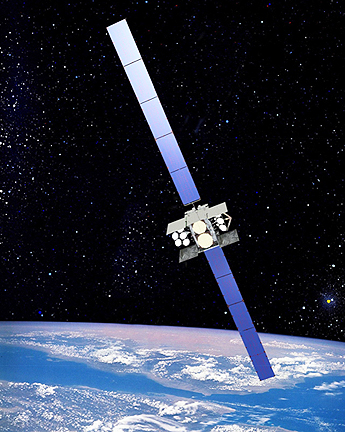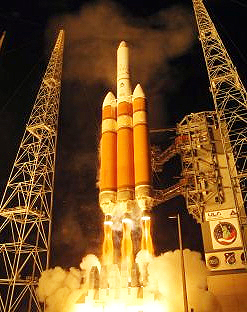
WGS-3 satellite
WGS provides flexible, high-capacity communications for marines, soldiers, sailors, and airmen throughout the world and is a key enabler of Command and Control, Communications, Computers, Intelligence, Surveillance, and Reconnaissance, as well as battle management and combat support information functions. WGS-3 is the third of six planned satellites in the wideband constellation.

WGS-3 launch at Vandenberg AFB, California, December 5, 2009
 WGS-3 is operated by the 3rd Space Operations Squadron at the 50th Space Wing, Schriever Air Force Base, CO, under the operational command of Joint Forces Component Commander for Space at Vandenberg Air Force Base, CA. The JFCC SPACE Joint Space Operations Center continuously monitors WGS-3's orbital safety and operational status, assisting USSTRATCOM with any performance issues
WGS-3 is operated by the 3rd Space Operations Squadron at the 50th Space Wing, Schriever Air Force Base, CO, under the operational command of Joint Forces Component Commander for Space at Vandenberg Air Force Base, CA. The JFCC SPACE Joint Space Operations Center continuously monitors WGS-3's orbital safety and operational status, assisting USSTRATCOM with any performance issues
WGS-3 provides a bridge between CONUS and our forces in Europe, Africa, South America and parts of the Middle East as well as forces afloat in the Atlantic Ocean. WGS-3 is the last satellite to be procured via the Block I contract and is a significant milestone for the program.

